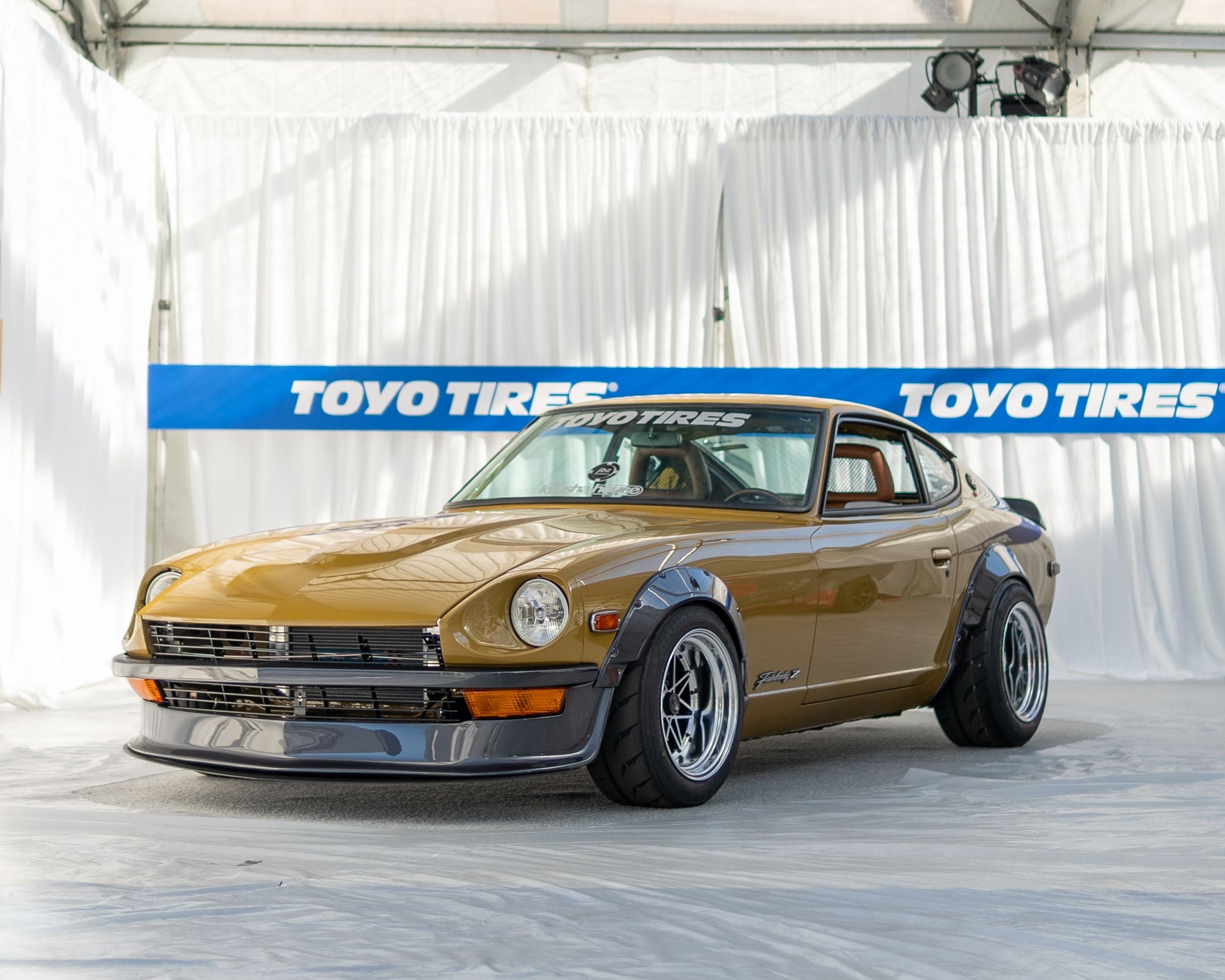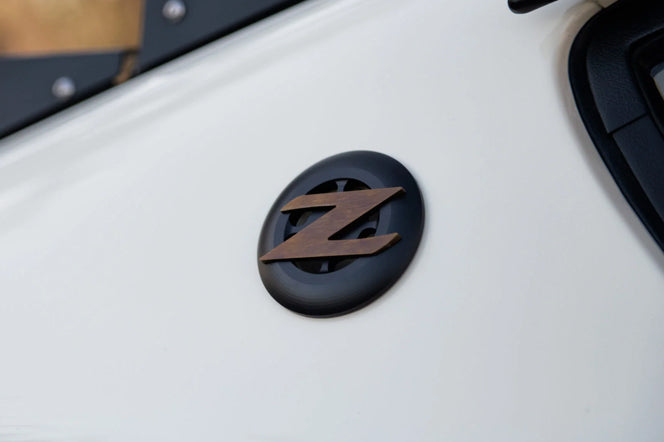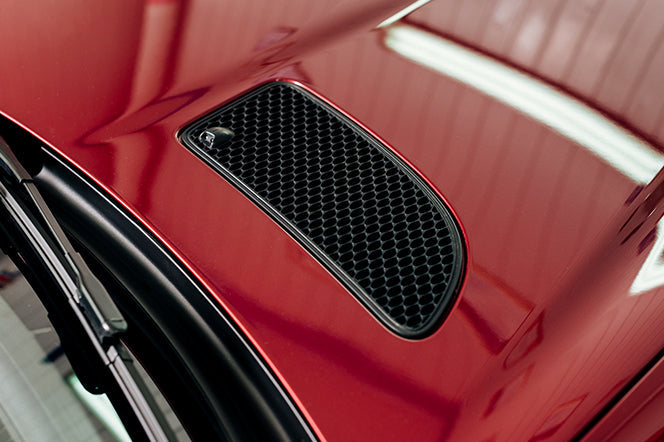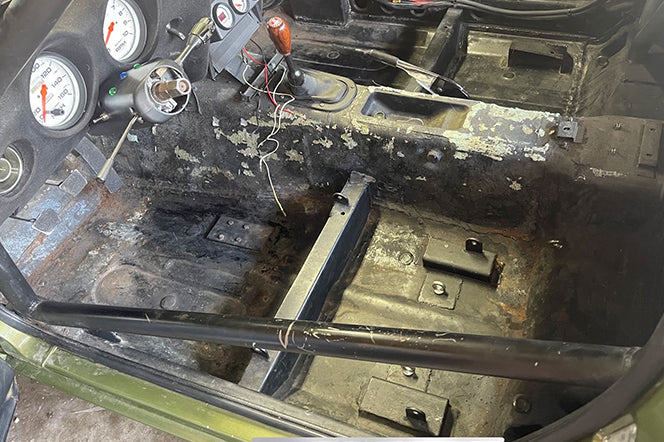So why does a Japanese car have a name inspired by an American Broadway musical? And why would they switch up such a cool name for the American market? These questions lead us into a whole discussion on marketing strategies and how different cultural influences shape the products we all enjoy.
If you're a hardcore car enthusiast or just someone who digs a good backstory - there's something in this for you.
So, let's jump right in!
Disclaimer: This article is authored by a member of the Skillard community and reflects their personal views, not necessarily those of Skillard. We welcome your feedback and corrections in the comments to help us continually improve this content.
Table of Contents
Where Did Fairlady Z's Name Come From?
The story of how Nissan named the "Fairlady Z" is really interesting because it shows how cultural influences can shape branding. This story starts off in an unexpected place - a Broadway theater in 1958!
So imagine this: Katsuji Kawamata, the President of Nissan Motors Japan at the time, was visiting New York and decided to catch a broadway play.

Photo Credit: Business Week
He watched "My Fair Lady" and was totally charmed by the musical's tone and the elegance of its lead character, so he chose these qualities to represent Nissan's new sports car line.

After World War II, Nissan became pretty popular in the sports car market, with models like the Fairlady 1500 and 1600. They wanted to connect with their audience by bringing in this beloved cultural reference and throwing in a bit of the theatrical style that Kawamata loved in the musical.
Fast forward to 1969 and Nissan unveiled the Datsun 240Z known in Japan as the "Fairlady Z." This car was a step up from its predecessors featuring a powerful 2.4-liter engine designed for exciting performances. But when the story had to do with the U.S. market, things took a turn.

The name "Fairlady" didn't appeal to American consumers like it did in Japan. When they seen this cultural gap, Nissan quickly switched gears by focusing on the car's performance features and marketing it as the "240Z".
This naming story is something I can really relate to because the goal is understanding and connecting with your audience. It reminds me of the time I tried to get my friends hooked on a British show with its U.K. title. They weren't too interested until I broke down the meaning here in the US and the plot - suddenly, they were all over it! Isn't it funny how the right name or term can make such a big difference in perception? That's marketing for you.
When Was The Last Fairlady Car Made?
Before 1978, Fairlady Z really made a splash, selling over half a million units. It felt like a baton pass because right on its heels, the Datsun 280ZX debuted in 1978 for the 1979 model year. The Z-cars have maintained their reputation for reliability, style, and fun with each new model but have also taken it up a notch.

As I've looked into all sorts of Z-car models over the years I've seen how each generation has especially refined the legacy of its predecessors. They've adapted to new tastes and the latest technology and are always keeping them at the forefront of the sports car scene. It seems their dedication to continuous improvement keeps the Nissan Z brand so strong.
Interestingly, even though the name "Fairlady Z" might not be close to many outside Japan, the change of those early models is seriously important.
The original set the standard for what a sporty, beautiful and affordable car should be. It also played a huge part in shaping future Z-cars and influenced how the auto industry approached making sports cars accessible to more people.
Reflecting on this process, it's clear that the spirit of the Fairlady Z lives on in the latest models, like the Nissan Z (RZ34).

Yes, the name has changed a bit, but every new change and performance improvement has that same spirit in the name. And the modern models like the RZ34? They meet the latest needs and preferences while still preserving a strong connection to the original Fairlady Z lineage. It's pretty cool how they honor their heritage with these names, right?
Japan's History of Naming Cars After Art Music and Philosophy
Nissan's way of designing and naming is as thoughtful as it is creative. Let me break down their two main Japanese philosophies and what they mean.
First off we have "Kabuku," which is all about stepping out of the norm or doing something different. When I hear this term it makes me think of the colorful kabuki theater in Japan - complete with its lovely costumes and big expressions. The first time I caught a kabuki show I was totally attracted to it by how unique and flashy it was.
Next there's "Utsuroi," which is all about change, fluid, and asymmetry. It makes you think of how smoothly the seasons turn or how time flies when you're swamped with things to do. This idea is kind of relaxing especially when I'm worried about changes since it reminds me that change is a normal part of life.
When you put "Kabuku" and "Utsuroi" together don't they just perfectly capture the ups and downs of life and the richness of language? They show us that strong great actions can guide and mirror the constant changes we all face.

Nissan has mentioned others, more recently, like Omotenashi (personally offering you more than you expected) and Iki (fresh and cutting edge).
Driving the Fairlady Z is an experience all its own - it feels like the car has its own personality. It has an emotional appeal that really hits home with car buffs like me. And the "Z" in its name - It's a loud shout that Nissan is all about shaking things up, showing off their knack for innovation.
The Fairlady Z isn't a leader in sales - it's also a cultural symbol known for its impressive performance and quality. It's pretty cool to see how this car ties back to Nissan's passion for drama and artistry from its name to its core values!
Why Change the Name for the U.S. Market?
Japan has always really loved Western culture and its unique tone. This interest usually worked great in the Japanese market but when it came to the U.S. Nissan figured out that they had to make some adjustments.
Getting cultural nuances right is a good idea, especially when you're selling something as personal as cars in America. Over here, people dig their powerful sports-oriented cars. It's not unusual for a car model to be popular in one country and not work in another.
Take the name "Fairlady." For some reason, it just didn't resonate with the American audience for whatever reason. Nissan needed to rethink its strategy to make a real splash in the super-competitive American car market.

After doing some market research, they chose the name "Datsun 240Z." They talked with potential buyers and dealers who thought a name that highlighted the technical specs like the 2.4-liter engine - would be more attractive. Back then, Nissan was still the Datsun brand in the U.S., and sticking with that name probably made launching the new car smoother. Imagine Japanese executives suggesting the name "240Z" to a room full of 1970s Americans - it's a pretty funny scene to think about, isn't it?
As you might expect, picking "240Z" as the model name turned out to be a good idea, and adding "Z" was great too. That single letter summed up the ideas of impressive technology and awesome performance, which is exactly what American buyers were after.
This rebranding was a big hit. It didn't only catch on with American drivers - it also really enhanced Nissan's reputation in the sports car markets. It can be a solid example of how tuning into local tastes is important for success in international markets.
From this experience, Nissan learned valuable lessons on blending market research with a good understanding of cultural differences, kind of like perfecting a recipe until it's just perfect.
Is It Okay to Use Fairlady Badges and Emblems?
So thinking about adding some Fairlady badges and emblems to your car? I say go for it! These little additions can really help your car stand out and give it a style.
I personally view the Fairlady badge as a cool shout-out to the incredible history of the Nissan Z-car series. I get that some people might hesitate to swap out the original badges, but remember, it's your car. Unless you're trying to sell it as a collector's piece or for a high resale value - why not customize it to your liking?
Keep in mind though that while these badges won't give your engine more power they do bring an emotional and historical importance to your vehicle. If you're someone who values the story behind your car as much as its performance you'll appreciate these badges.

A heads-up: adding a Fairlady badge doesn't turn your car into a real Japanese import Fairlady Z., Especially if yours is a left-hand drive! Any seasoned car enthusiast will notice something's up when they see which side you're driving on.
It's pretty interesting to note that the original Fairlady Z in Japan came with a 2.0-liter L20A straight-six engine while the 240Z had an L24 inline-six engine to meet less strict engine displacement standards elsewhere.
Such differences in engine, badges and which side the leading wheel is on - are pretty fascinating right? Just make sure if you choose to sell you clarify that your car isn't an authentic Fairlady Z. This will help avoid any misunderstandings.
I find it really awesome how the Fairlady name still has such a strong presence in the Japanese market. It reflects the enduring legacy and beauty of the car. To me, that adds to the car's story and even improves the appeal of newer models. Those badges are just the icing on the cake!
Other Fun Facts About the Fairlady Z
I've always been fascinated by the story of Nissan's Fairlady Z - it's made for different markets and has a really interesting history that grabs my attention.
Let's talk about it. The Nissan Sports Car Styling Studio came up with this car, and it perfectly captures the style and needs of its time with its cool two-seat coupe design. In Japan, the engineers went with a 1998cc engine, which was a good idea since it helped them take benefit of certain tax breaks for smaller engines under Japanese law.On the other hand, the models that went overseas, like the Datsun 240Z that landed in the USA, had a bigger 2393 cc engine - perfect for places like ours where bigger engines aren't heavily taxed.
The Fairlady Z has a monocoque chassis, which makes it strong yet lightweight - a great mix that improves both safety and handling. It also comes with an independent suspension system featuring MacPherson struts at the front, and Chapman struts at the back. From 1969 to 1978, this car led the way in the first-generation sports car scene and impressively sold over 520,000 units all over the world.
Here's something cool I love about its history: in 1970, the Datsun 240Z snagged a win at the 19th East African Safari Rally.

This win wasn't just for show - it really showed off the Z's durability and powerful performance qualities that have been carried through to every new generation of the model. Today, we're on the seventh generation, still known internationally as the Nissan Z (RZ34) and as the Nissan Fairlady Z in Japan, always coming up with new ideas while staying true to its roots.
It's awesome to see how the series has always kept its core qualities of beauty and performance. And I have to say the name "Fairlady" adds the perfect touch of elegance and appeal.
Build Your Dream Car
Nissan really nailed it when they named it the "Fairlady Z" - except in the U.S., where they switched to "240Z." Interestingly, this name resonated more with the 1970s crowd. A great name connects with people just as much as the product's design does.
This was a smart strategy to establish a memorable brand identity. It's clear it still hits home especially with the new Nissan Z launch!
Here at Skillard, we focus on quality and celebrating our roots. We make custom parts that help with models like the 240Z, 260Z, and 280Z.

Our products, from sleek bumpers to solid aluminum door cards and elegant center consoles to spoilers, have something for pretty much every Datsun enthusiast.
Why not swing by our store and see for yourself? You might just find the perfect addition to customize your ride!





